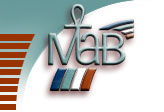 |
|
| Biosphere Reserve Information | ||||
|
MANCHA HÚMEDA |
|
|||
|
|
||||
| General Description | La Mancha Húmeda Biosphere Reserve comprises the Tablas de Daimiel National Park, which corresponds to the core area, and the Alcázar Lake, and the Lagunas de Ruidera National Park, which is a refuge for aquatic birds. The area is delimited to the west by the foothills of the Toledo Mountains (Calderina and Malagon Sierras), to the south of the Calatrava Sierras and to the south-east and east by the Campo Montiel Area. Daimiel is a large, slightly undulating plain, which is flooded by the waters of two rivers, the Ciguela and the Guadiana, one being brackish and the other soft, creating an unusual ecosystem. It comprises numerous small islands, the biggest being Isla del Pan. It is covered with European reed mace (Typha latifolia), common reed (Phragmites communis) and bulrush (Scirpus lacustris). These wetlands are exceptional for their avifauna and are particularly important as nesting and wintering sites for many species such as black-necked grebe (Podiceps nigricollis), purple heron (Ardea purpurea), shoveller (Anas clypeata) and a wide variety of other waterfowl. Rare species include white spoon bill (Platalea leucorodia), greater flamingo (Phoenicopterus rubber) and black stork (Ciconia nigra). More than 150,000 people (2002) live in the biosphere reserve, engaged in sheep raising, agriculture, local industries and hunting. Most of the agricultural land (wheat, barley, corn, olives) is devoted to vineyards although wool production is also important. The biosphere reserve plays a very important role in the regional and local economic development. The Mancha Húmeda has also been the scenario converted by Cervantes for his famous adventures of Don Quijote de la Mancha. Tourism is becoming increasingly important as an economic activity in the region. | |||
| Major ecosystem type |
Freshwater wetlands and lagoons; Evergreen sclerophyllous forests, woodlands or scrub |
|||
| Major habitats & land cover types | Freshwater wetland area with Europe reedmace (Typha latifolia), common reed (Phragmites communis) and bullrush (Scirpus lacustris); river ecosystems with submerged plants such as Chara spp.; lagoons; agroecosystems. | |||
| Location |
Parque Nacional de las Tablas de Daimiel: 39°04'N; 03°37'W Parque Natural Lagunas de Ruidera: 38°58'N; 02°52'W |
|||
| Area (hectares) | ||||
| Total | 25,000 | |||
| Core area(s) | 1,928 (Parque Nacional de las Tablas de Daimiel) | |||
| Buffer zone(s) | 9,182 (of which El Parque de las Lagunas de Ruidera: 3,772) | |||
| Transition area(s) when given | ~13,890 | |||
| Altitude (metres above sea level) | Parque Nacional de las Tablas de Daimiel: +600 to +700 Parque Natural Lagunas de Ruidera: +800 to +1,000 | |||
| Year designated | 1980 | |||
| Administrative authorities | La Administración Central (Organismo Autónomo de Parques Nacionales, Ministerio de Medio Ambiente) El Parque Natural de las Lagunas de Ruidera El Gobierno Autónomo de Castilla de la Mancha | |||
| Brief description |
Meteorology Water quality Physical-chemical parameters of the lagoons The control of plant and fauna populations Bird populations The effectiveness of the hydrological regeneration plan |
|||
| Specific variables... | ||||
| Abiotic | Abiotic factors, hydrology, meteorology. | |||
| Biodiversity | Birds, fauna, lagoon systems, plants, population genetics/population dynamics. | |||
| Socio-economic | n.a. | |||
| Integrated monitoring | Management issues. | |||
| Contact address |
Federico Grande Pinilla Director Conservador del Parque Natural de Las Lagunas de Ruidera C/ Alarcos, 21 13071 Ciudad Real Spain |
|||
| Telephone | (34.926) 52 81 16 | |||
| Fax | (34.926) 27 94 99 | |||
|
fgrande@jccm.es |
||||
| Contact address |
Manuel Carrasco Redondo Parque nacional Las Tablas de Daimiel Paseo del Carmen s/n 13250 Daimiel (Ciudad real) Spain |
|||
| Telephone | (34.926) 85 10 97 | |||
| Fax | (34.926) 85 11 76 | |||
|
daimiel@mma.es |
||||
| Last updated: 27/02/2007 |